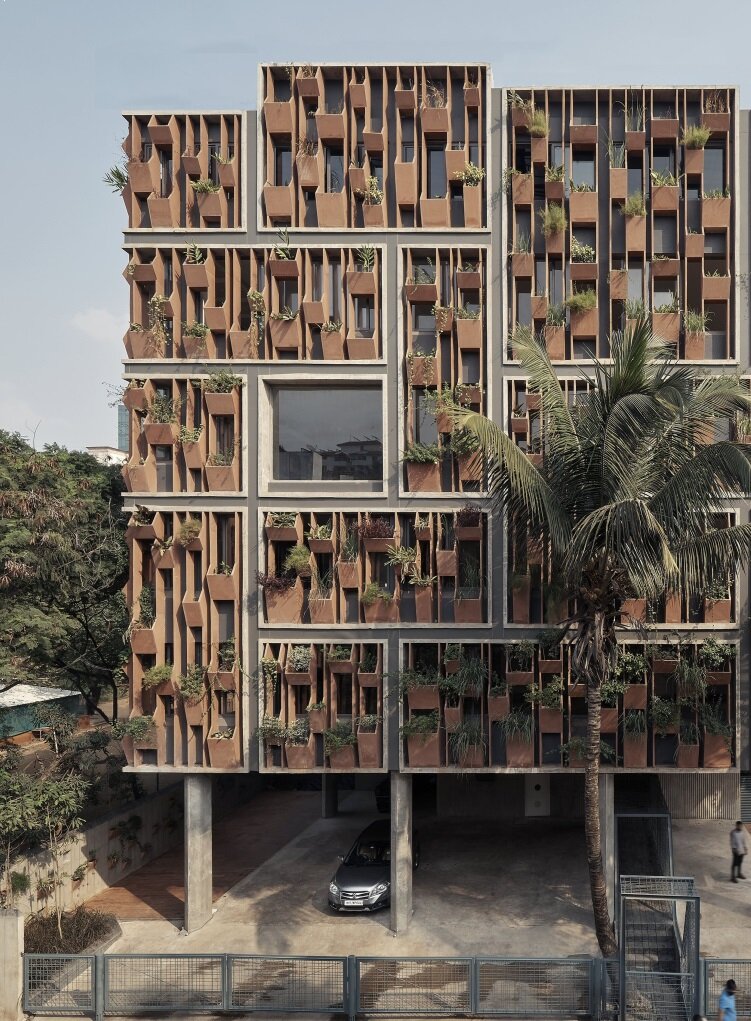#16761. Biophilic Terracotta Facade with Integrated Plant Modules

This is a wonderful example of modern biophilic architecture, where the terracotta façade of the building transforms into a vertical garden. The multi-story structure presents an impressive composition of rectangular modular blocks, creating a dynamic rhythm on the facade. The distinctive feature of this project is the integration of numerous cell-containers for plants, which seem to "grow" out of the building's main structure.
The facade is executed in warm brown-terracotta tones, creating an organic contrast with the greenery of the plants. The modular elements of the facade are arranged asymmetrically, giving the building a sense of movement and living structure. A concrete frame system encloses these modules, creating a clear geometric grid that emphasizes the contemporary character of the architecture.
Such facade design presents an interesting solution for integrating natural elements into the urban environment. The ground floor is raised on pillars, creating a semi-open space for parking and enhancing the visual lightness of the massive structure. A large panoramic window in the center of the facade breaks the monotony of repeating elements and likely provides illumination for a common area inside the building.
When adapting similar solutions for a private home, one can use smaller-scale modular elements, built-in plant containers, and combine materials to create textural diversity. It's important to design a system for watering and maintaining the plants, as well as to consider the climatic characteristics of the region when selecting plants for such a vertical garden.